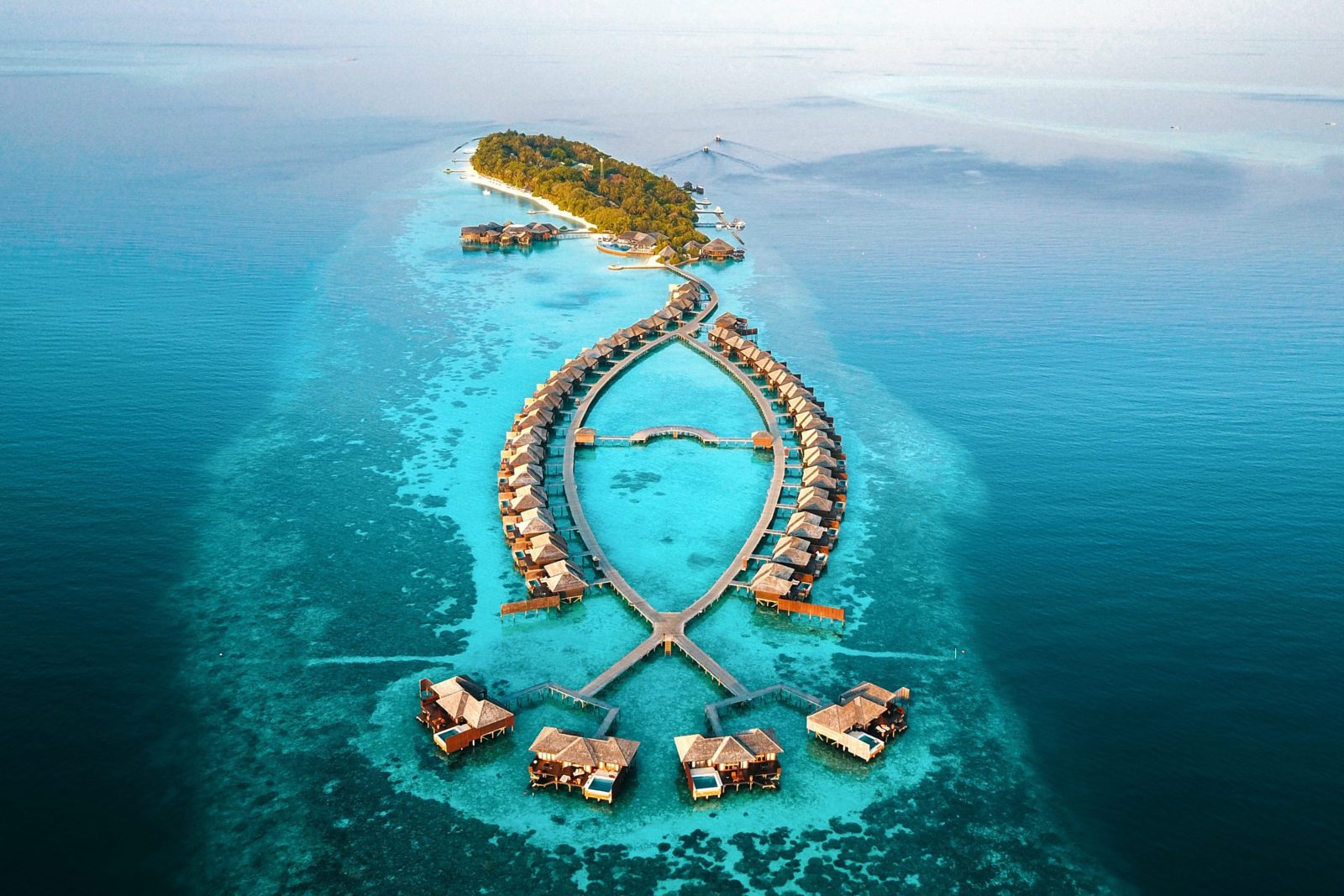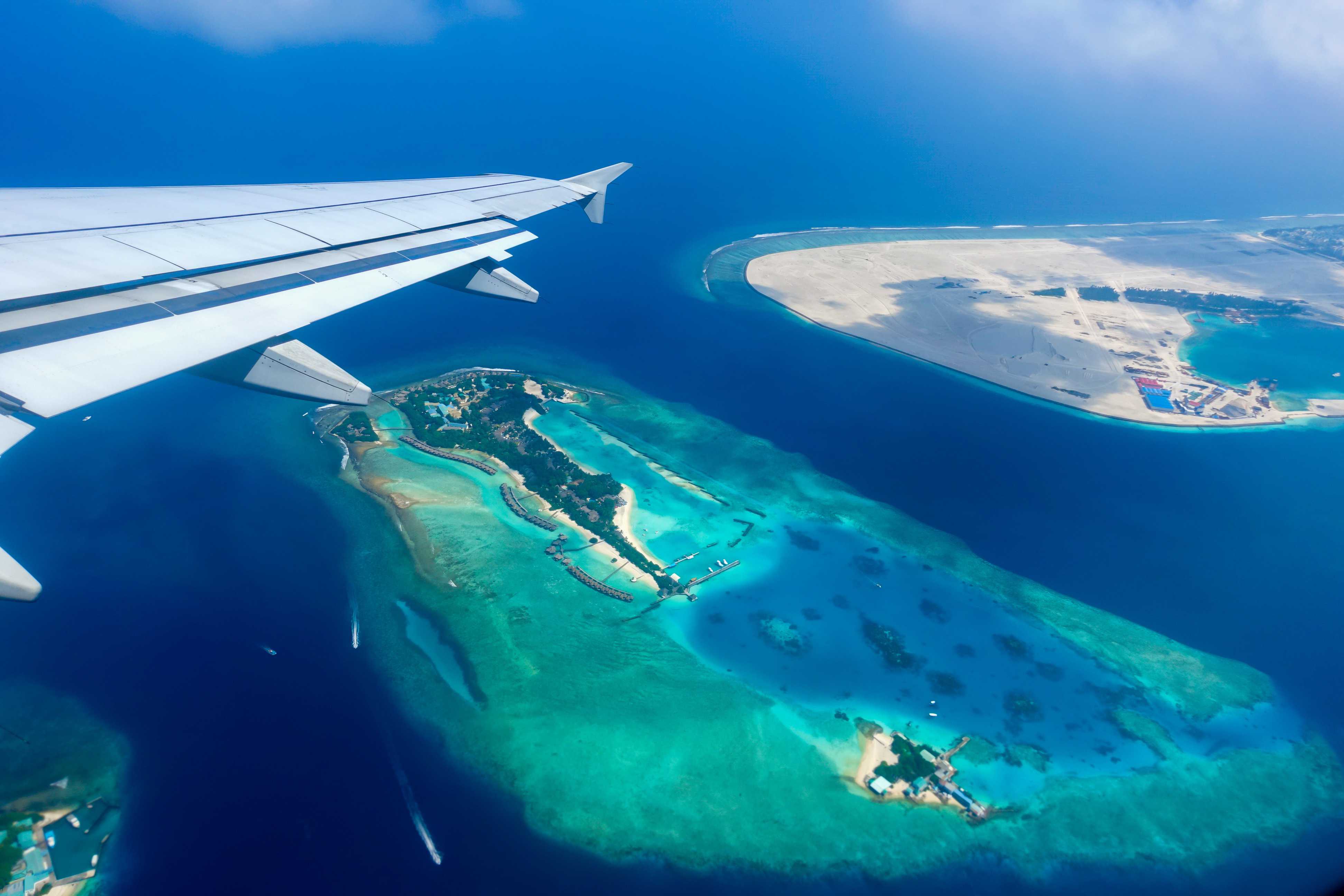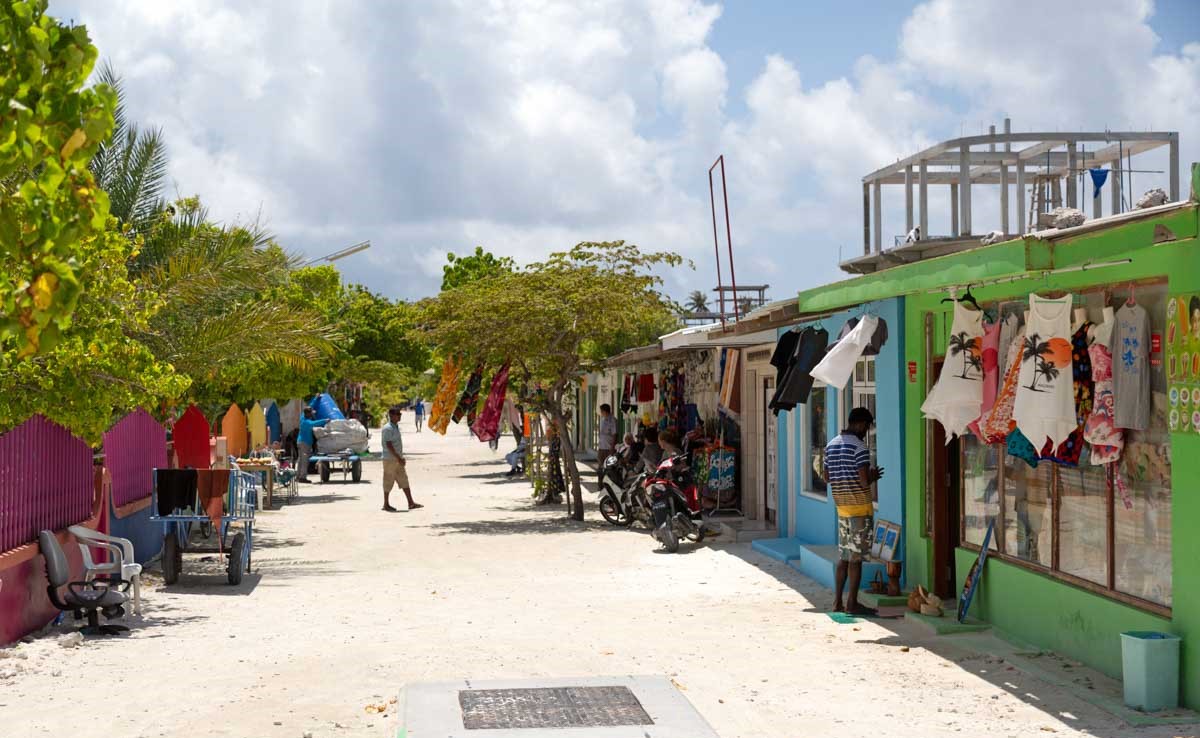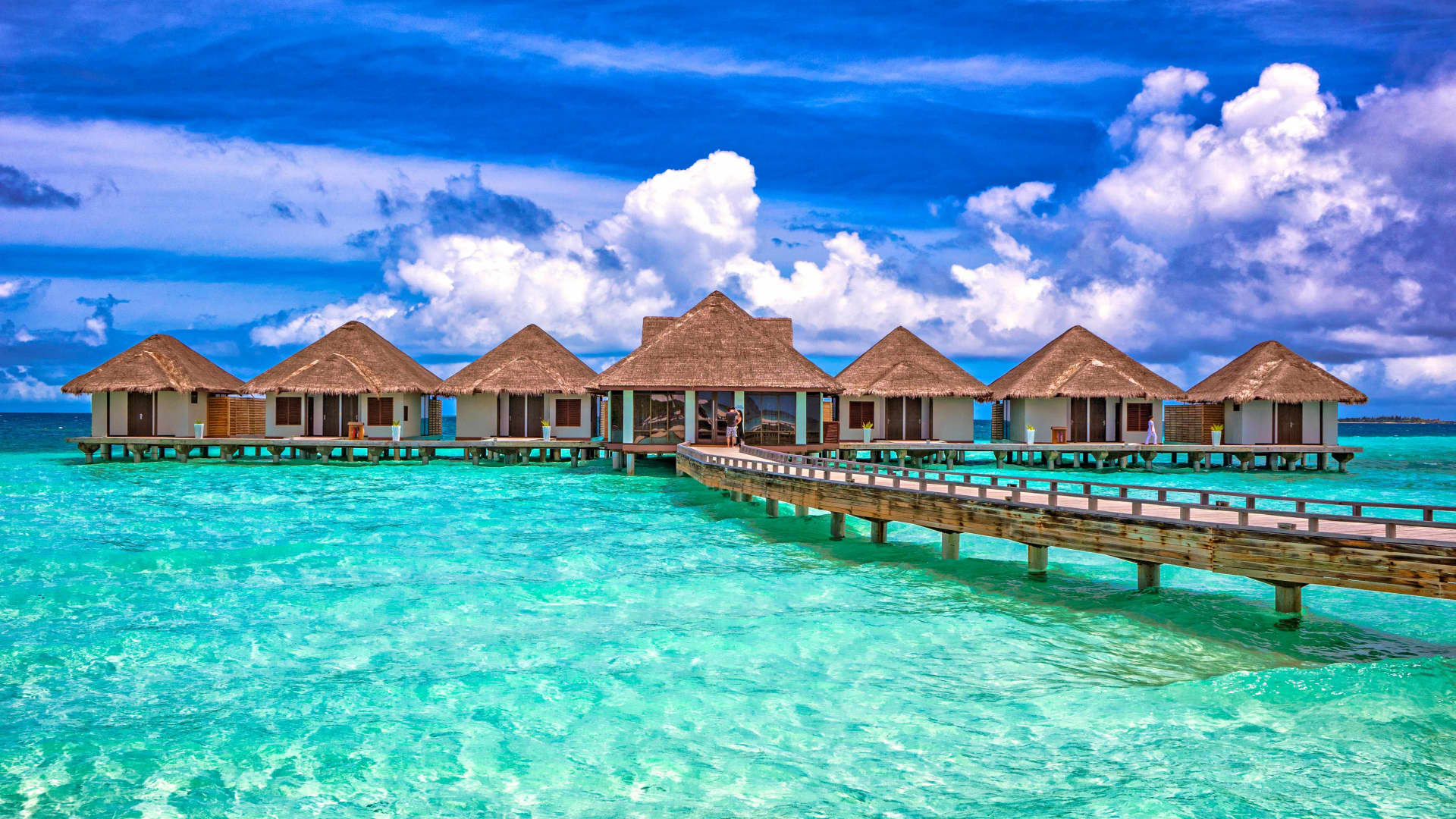Travel
Maldives Heavenly Islands
Heaven on earth


Seen from the sky as the plane starts to lower its altitude, the long and narrow chain of natural atolls looks like an abstract painting of small cells floating on a canvas of deer blue. Patches of sparkling turquoise water contrast with the white stripes of beach sand along the borders of the small islands. A friend and I are landing in the Maldives, an island nation composed of some islands scattered in the middle of the Indian Ocean.
At the Ibrahim Nasir International Airport, At the Ibrahim Nasir International Airport, Lone is instantly hit by the atmosphere of tour packages and holiday brochures as groups of tourists wait to be picked up by tour operators, to be transferred by speedboat or seaplane to their dream island. For decades the archipelago has been an exclusive destination thriving on luxury tourism, the main source of income. The first resort was opened in 1972, and currently there are more than 100 private islands which have been developed as resorts, while some 200 are inhabited by Maldivians.
Transportation from the airport has been arranged by our guesthouse. We exchange some US dollars into Rufiyaa and are taken to Hulumale, a mere 15-minute drive connected to the airport and a popular stopover on the way to other islands. Hulumale is a rectangular mass of land built not far from Male island, the world’s smallest capital, and one of the most densely populated cities in the world.
The lack of development and infrastructure in the rural and remote islands have urged its residents to move to the capital in search of better education and job opportunities. Accommodating the newcomers has proved challenging and today roughly 130,000 residents live crammed in high-rise buildings on a tiny piece of land not even six square meters.
Maldives is a low lying country and the highest island lies no higher than 2.4m. The quick rising of water will eventually result in the drowning of the islands. The challenges are big and it is not surprising that the country is on the front line of climate change. A few islands have already been evacuated and imperative solutions are needed. The survival of the nation island is at stake.
While former president Nasheed announced a plan to buy land elsewhere to relocate the population, the strategies of the new government under President Abdulla Yameen, elected in 2013, have taken a different turn. His strategy focuses on renting out islands and using the money to reclaim and build new flood-resistant ones.

Hulumale–the City of Hope in Dhivehi language- is an island that has grown out of the sea. Its construction began in 1997 and it is the most ambitious geo-engineering project in Maldives. It now houses some 40,000 people with a target goal of 240,000 residents. Built with large avenues lined up with trees, Hulumale still looks like a construction site.
Our resort is only accessible by seaplane. The next day, we arrive at the terminal and are taken to the resort designated lounge where we can see the seaplanes take off and land. The ambiance and staff service in the lounge feels already like a prelude to our destination. We are served juice and sandwiches while we wait for the rest of the passengers.
It’s a 30-minute scenic flight before the overwater bungalows of Coco Palm Dulhi Kolhu Island in the form of a palm leaf come into view. We disembark onto a floating platform and we board a boat that takes us to shore where we are welcomed by the manager. The island sets its own unofficial time and runs one hour ahead of Male so that guests have more of a full day.
Here one feels miles away from the chaos and noise of the city. A sandy path runs across the island and the lush greenery is well-kept and manicured, to create an idyllic and secluded atmosphere. It is the end of December and the resort’s guests are mostly families and couples from Europe on Christmas and New Year’s vacation.
I start to grow curious about how such an impeccable and isolated set up operates behind the scenes. With the limited resources of the Maldives, I wonder how the resorts manage electricity and drinking water and how they dispose of waste; how do they respect and maintain the natural and fragile ecosystems with minimal disturbance? How can luxury be compatible with sustainability?
Not an easy task when the Maldives receives millions of tourists every year. With the introduction of a Green Tax in 2015, resorts have been encouraged to minimize and counteract the negative impacts of tourism. Coco Palm is listed as one of the most eco-friendliest resorts in the Maldives, with a focus on endangered turtles.
I find out that the island operates independently. Two low noise generators supply electricity and drinking water is produced and bottled on-property. An efficient sewage plant treats used water and biodegradable cleaning products are used to achieve this. Plastic bags and bottles are banned by using better alternatives. For example, toiletries are refilled into glass bottles and ceramic containers.

Maldives is a low-lying country and the highest island lies no higher than 2.4m. The quick rising of water will eventually result in the drowning of the islands. A few islands have already been evacuated and imperative solutions are needed. The survival of the nation island is at stake
Even though Maldives is a Muslim country and sharia law is applied, resorts are allowed to exist in a bubble and almost anything goes. Alcohol and pork products are consumed and swimwear and bikinis are accepted. Actually, many tourists leave the Maldives with little or no idea of how life in a local island looks like.
In recent years, life has started to change. In 2009, the former president Nasheed broke the stronghold of luxury resorts owned by foreign companies. Tourists are now allowed to stay in local islands. Platforms like Airbnb and Couch surfing have gained popularity and there has been a massive increase in guest houses run by locals.

Gulhi Island is our next choice to spend the rest of our vacation. Easily accessible from Male, we catch the dhoni – local boat – at 3 pm. It is filled with local residents; the women wear the hijab and I count only five foreigners on board. It’s a 90-minute ride before we arrive in tiny and sleepy Gulhi. Our simple and budget guesthouse is within a short walk from the jetty.
We meet Cherry, a young and laid-back Chinese woman. She runs the guesthouse. Two years ago, after her first visit in Gulhi, she decided to start a hospitality business on the island and moved there to escape from a busy life in a crowded city in eastern China. She rented a house from a local family, did some renovation work and turned it into a guesthouse. To help her she hired a cook, Peter, also Chinese, and Rafa.
Rafa is an amicable young Bangladeshi in his early 20’s. He has been living and working in Gulhi for almost two years. When I ask him how he finds life in Gulhi, he frowns with a smile. “It is too quiet here. It can get really boring. I want to go back to Bangladesh. I miss my family.”
In less than half an hour, you have seen everything from one end to the other: local men building boats at the oldest shipyard; local women hanging on swings and selling their crafts or playing in the afternoon in the volleyball ground; children playing and running around; a few people hanging out in the couple of cafes and the few tourists getting a tan on the bikini beach tucked away and equipped with sun loungers and parasols.
Now it’s about time to step back and embrace the local rhythms dictated by this particular island environment before we leave. The Maldives is not only sea, sun, and sand. Beyond the resorts, there is a truly unique way of life and cultural mix to be discovered.
